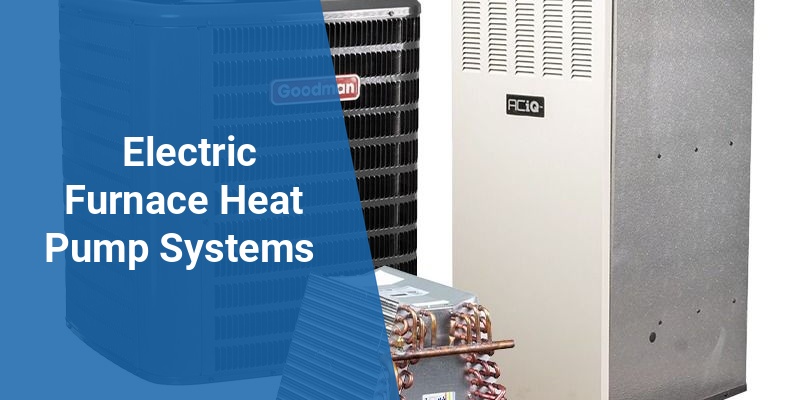Electric furnace heat pump systems combine two popular HVAC technologies to provide efficient home heating and cooling solutions. These systems offer an energy-saving alternative to traditional furnaces and air conditioners by utilizing heat pump technology alongside electric resistance heating. In this article, we explore how electric furnace heat pumps work, their advantages, installation considerations, and how they benefit American homeowners seeking cost-effective comfort year-round.
| Key Feature | Description |
|---|---|
| Primary Heating Method | Heat pump with electric furnace backup |
| Energy Efficiency | Higher than electric resistance alone |
| Typical Use | Moderate to cold climates with electric utilities |
| Cooling Capability | Integrated heat pump provides air conditioning |
| Installation Cost | Moderate; varies by system size and home |
How Electric Furnace Heat Pump Systems Work
An electric furnace heat pump system combines two heat delivery methods. The heat pump extracts warmth from outdoor air—even in cold temperatures—and transfers it indoors. When outdoor temperatures drop too low for efficient heat pump operation, the electric furnace activates, using electric resistance coils to generate heat. This dual system allows consistent indoor comfort regardless of weather conditions.
During warmer months, the heat pump reverses operation, functioning as an air conditioner by removing heat from indoor air and releasing it outdoors. This integration makes the system a year-round HVAC solution, saving space and consolidating equipment.
Benefits of Choosing an Electric Furnace Heat Pump
Electric furnace heat pumps provide several advantages over standalone electric heating or conventional fuel-based systems.
- Energy Efficiency: Heat pumps deliver 2-3 times more heat per unit of electricity than electric resistance heating alone, reducing utility bills.
- Lower Carbon Footprint: Using electricity, especially from renewable sources, reduces greenhouse gas emissions compared to fossil fuels.
- Integrated Cooling: Heat pumps double as efficient air conditioners, eliminating the need for separate cooling units.
- Quiet Operation: Modern heat pumps and electric furnaces operate quietly, enhancing indoor comfort.
- Simplified Maintenance: Combining systems can reduce the number of components needing upkeep.
Comparing Electric Furnace Heat Pumps to Other Heating Systems
| System Type | Energy Efficiency | Installation Cost | Operating Cost | Cooling Capability |
|---|---|---|---|---|
| Electric Furnace Heat Pump | High (Heat Pump Efficiency + Electric Backup) | Moderate | Moderate – Low | Yes (via heat pump) |
| Standalone Electric Furnace | Low (Electric Resistance Only) | Low | High | No |
| Gas Furnace with AC | Moderate | Moderate to High | Variable (Gas Prices Dependent) | Yes (Separate AC unit) |
| Heat Pump Only | High | Moderate | Low | Yes |
Installation Considerations for Electric Furnace Heat Pumps
Choosing and installing an electric furnace heat pump system involves assessing climate, home size, and existing HVAC infrastructure.
- Climate Suitability: Heat pumps perform best in moderate climates but electric furnace backup makes them viable in colder regions.
- Home Size and Insulation: Proper system sizing ensures efficient operation. Well-insulated homes maximize heat pump performance.
- Electrical Capacity: Upgraded wiring or circuit breakers may be needed to handle peak electric furnace loads.
- Professional Installation: Certified HVAC technicians ensure proper installation, maximizing system efficiency and longevity.
Cost and Energy Savings Potential
While electric furnace heat pumps typically involve higher upfront costs than traditional electric furnaces, their improved energy efficiency leads to significant savings.
According to the U.S. Department of Energy, heat pump systems can reduce electricity consumption for heating by up to 50% compared to electric resistance furnaces. This translates into lower monthly utility bills and potential eligibility for energy efficiency rebates.
Call 888-906-9139 for Free Local HVAC Quotes – No Obligation, Just Savings!
Choosing an electric furnace heat pump also future-proofs home heating by aligning with the growing trend of electrification and renewable energy integration across the United States.
Maintenance Tips for Optimal Performance
Routine maintenance can extend the lifespan and efficiency of electric furnace heat pump systems.
- Regular Filter Replacement: Keep air filters clean to ensure good airflow and reduce system strain.
- Annual Professional Inspection: Technicians should check refrigerant levels, electrical connections, and furnace components.
- Clear Outdoor Unit: Remove debris and snow buildup from the heat pump unit.
- Thermostat Calibration: Verify accurate temperature control to optimize energy use.
Choosing the Right Electric Furnace Heat Pump for Your Home
When selecting an electric furnace heat pump system, consider these factors:
- Efficiency Ratings: Look for a high Seasonal Energy Efficiency Ratio (SEER) and Heating Seasonal Performance Factor (HSPF).
- Manufacturer Reputation: Select brands with proven reliability and good warranties.
- Size and Capacity: A system sized to your home’s heating and cooling load maximizes comfort and efficiency.
- Compatibility: Ensure the system integrates well with existing ductwork or plan for necessary modifications.
Consulting with HVAC professionals is essential to tailor a solution that meets specific home requirements and climate conditions.
